The Snowstorm

Let's see how this works.
First I blow in a cloud. Now we have a dull gray supercooled cloud. It is just
sitting there doing nothing. Eventually it will evaporate. Many natural clouds
just evaporate without forming any rain or snow. [Letting the
cloud calm down and become stable enhances the beauty of what happens next.]
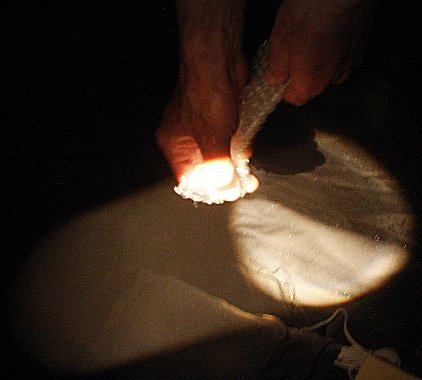
Now I'm going to pop a bubble. I quickly squeeze the bubble from the side so
that it bursts away from my hand. [Sometimes my hand drags in some
dry air or some warm air and the ice crystals do not form. Sometimes the bubble
does not break properly and nothing happens. A firm, quick burst works best.
When it works you should hear a sharp snap sound and see a jet of white smoke.]
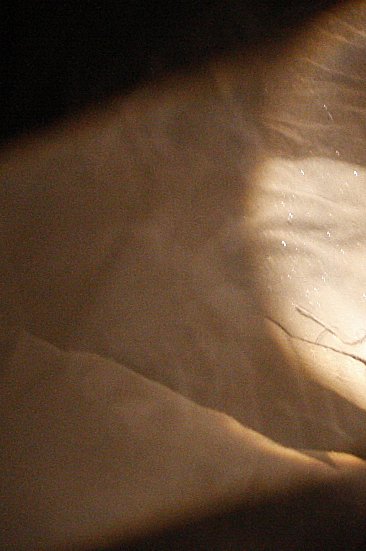
Now watch! The white smoke is starting to expand around the freezer.
[Notice the brighter streaks in the light beam.] If no one is disturbing
the air in the freezer, an oscillating drapery of snow crystals forms:
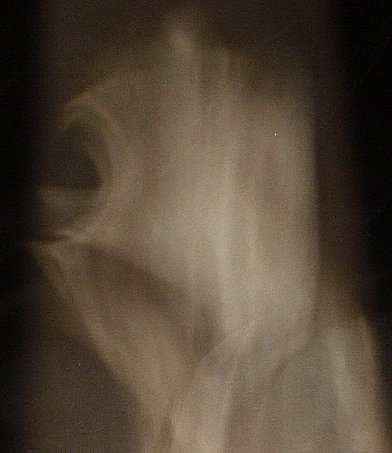

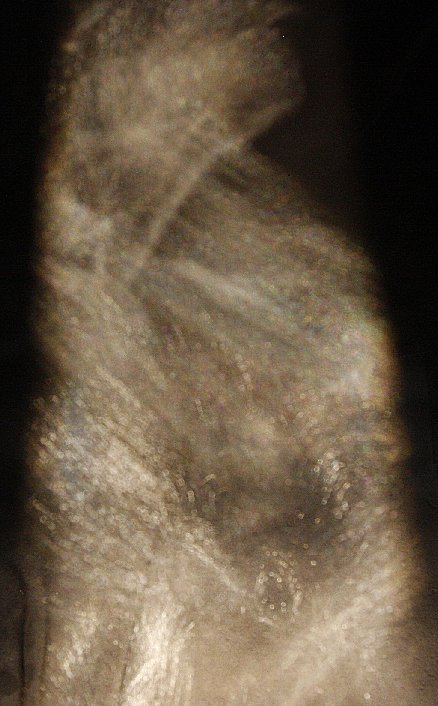
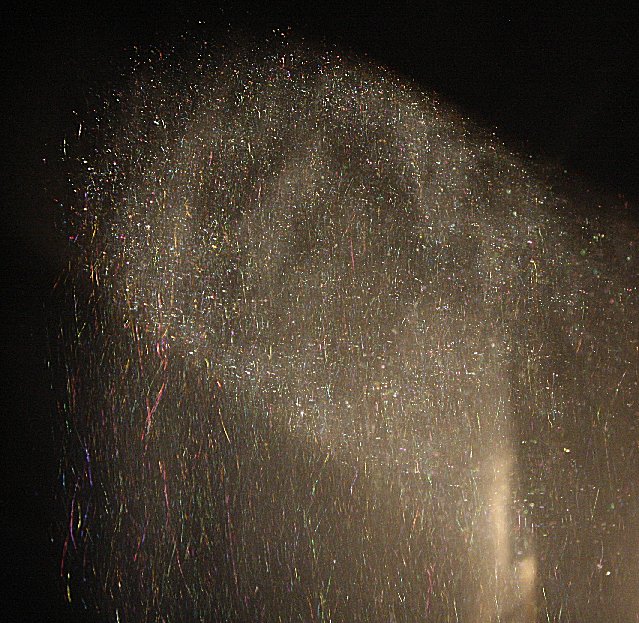
Now it is starting to sparkle everywhere. It looks like diamond dust. One bubble
makes 100 million sparkling snow crystals! [I calibrated them in
a large freezer in the early 1970s. I let them all settle out to the floor of
the chamber on which I had a microscope slide. I counted a representative area
on the slide and multiplied it up to the floor area of the chamber.]
Eventually they use up all of the supercooled water and stop growing.
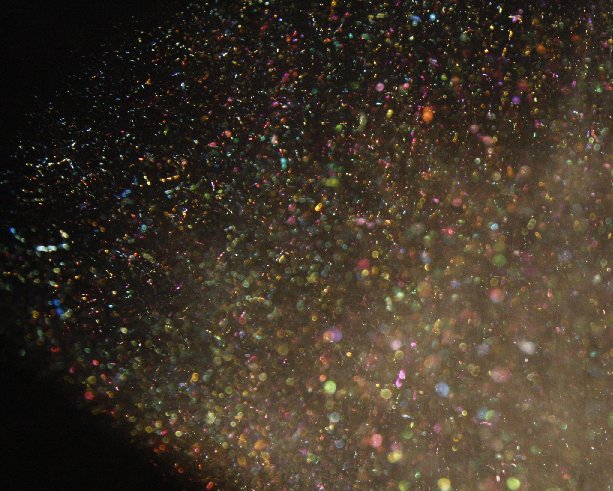
You may see colors: reds and greens [including in these illustrations].
The ice itself has no color. What we are seeing are interference colors caused
by the ice crystals having a thickness close to the wavelengths of light.

Now it is time to feed them. [See the cloud entering from the left
in the illustration.] Watch how fast my fresh breath disappears!
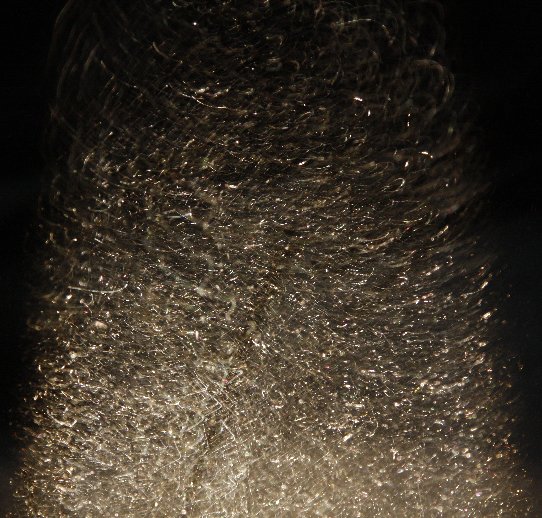
One to five seconds, and it is gone. I'll feed them again.
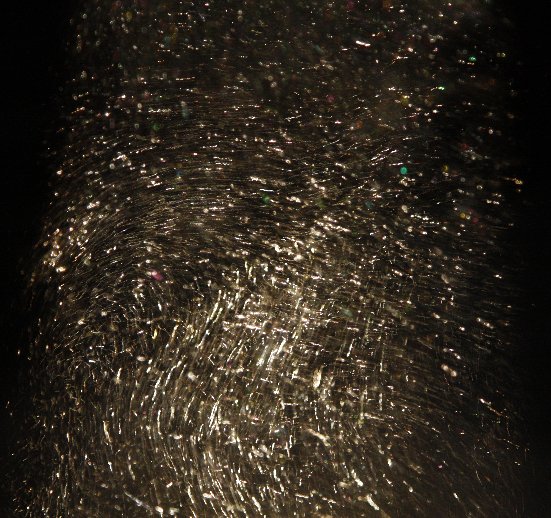

See how hungry the crystals are for fresh liquid water! The same hunger exists
in natural clouds. The ice crystals gather up the moisture of the supercooled
cloud, get big, and fall out. The only difference is that here in this freezer
we have a much greater concentration of ice particles.
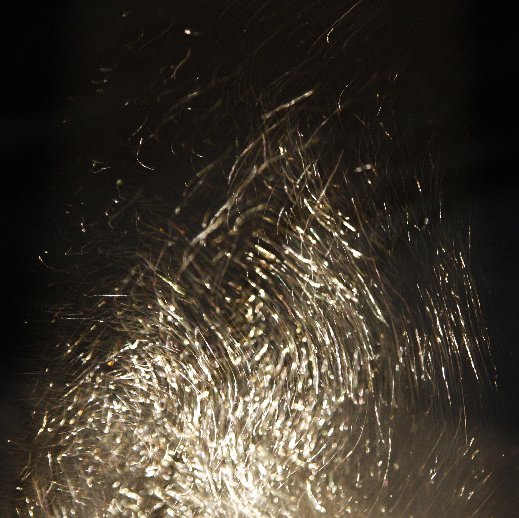
Now I have to keep feeding them so that they will get big enough to fall out.
[Several blowings are necessary. Blow to the bottom like blowing
out a candle. Let the cloud rebound upwards through the crystals. The number
of blowings you will determine from experience. You want the crystals gone to
the floor of the freezer by the time of the next demonstration.]

After about three minutes most of the snow has fallen out to the bottom.

After several hours of such instant snowstorms the bottom of the freezer
becomes quite white.
[Send the viewers back to their seats. Shut the freezer and turn
off the microscope light and video camera. Move back to overhead projector.]
Back, Next
Home,
equipment,
clouds,
vapor growth,
crystal growth,
cloud seeding history,
related topics,
water optics,
ice optics,
trouble shooting














